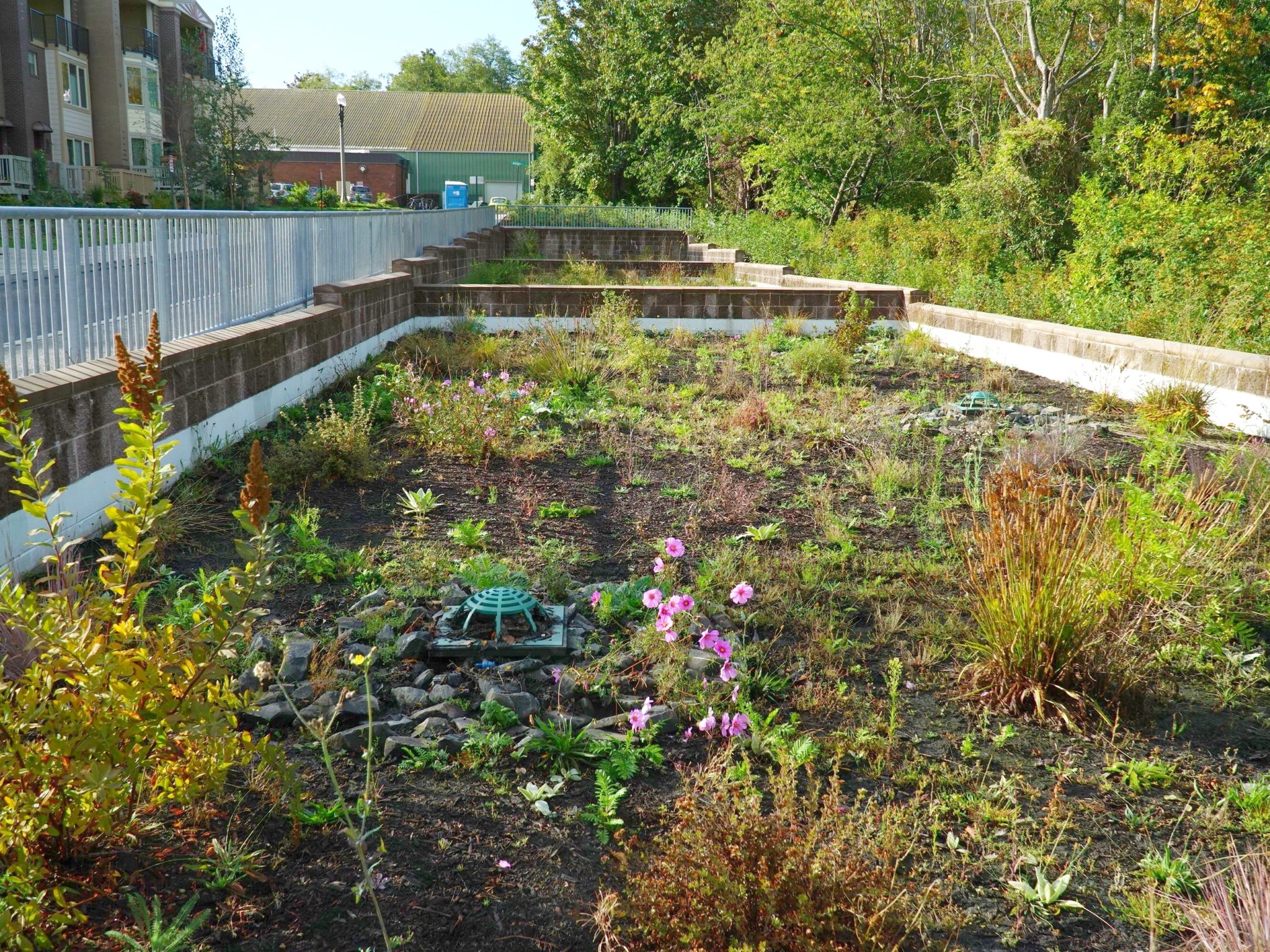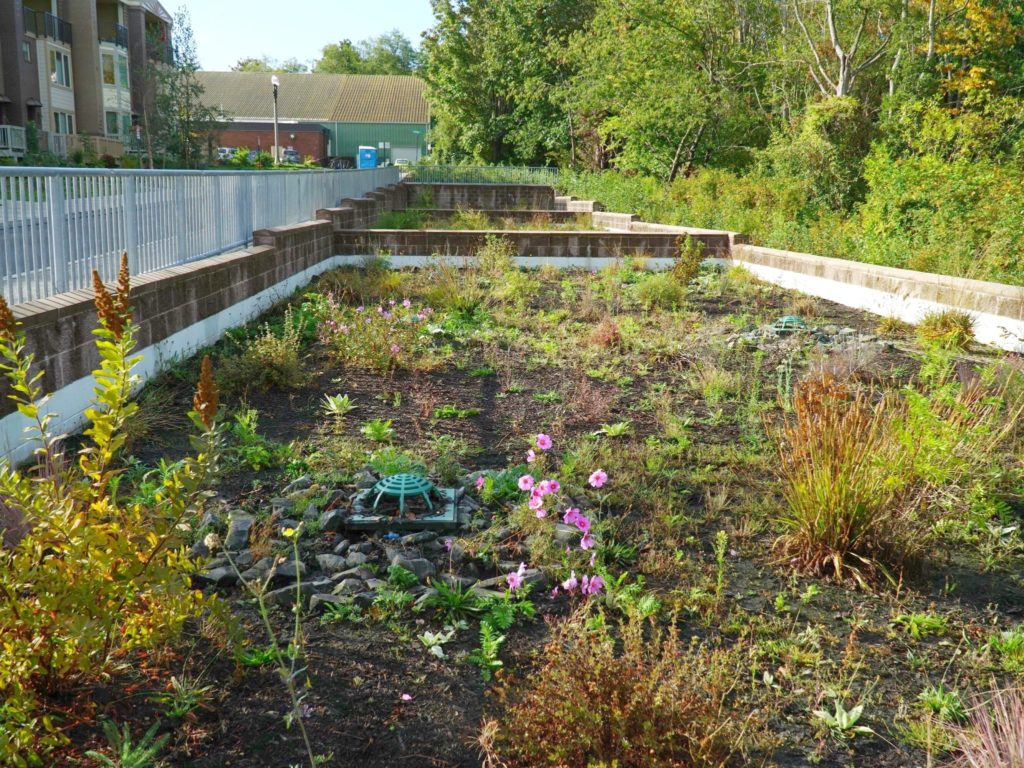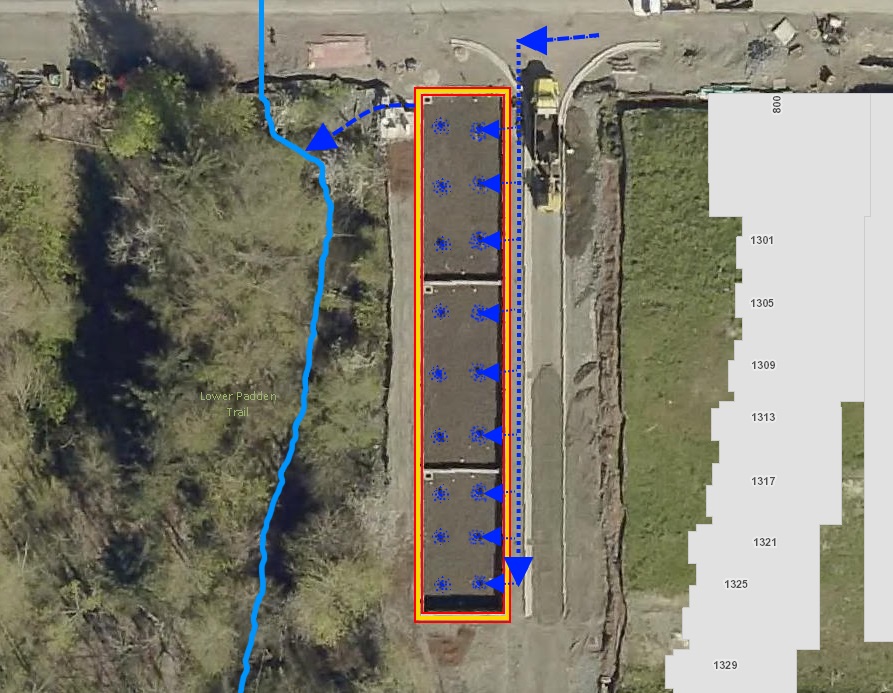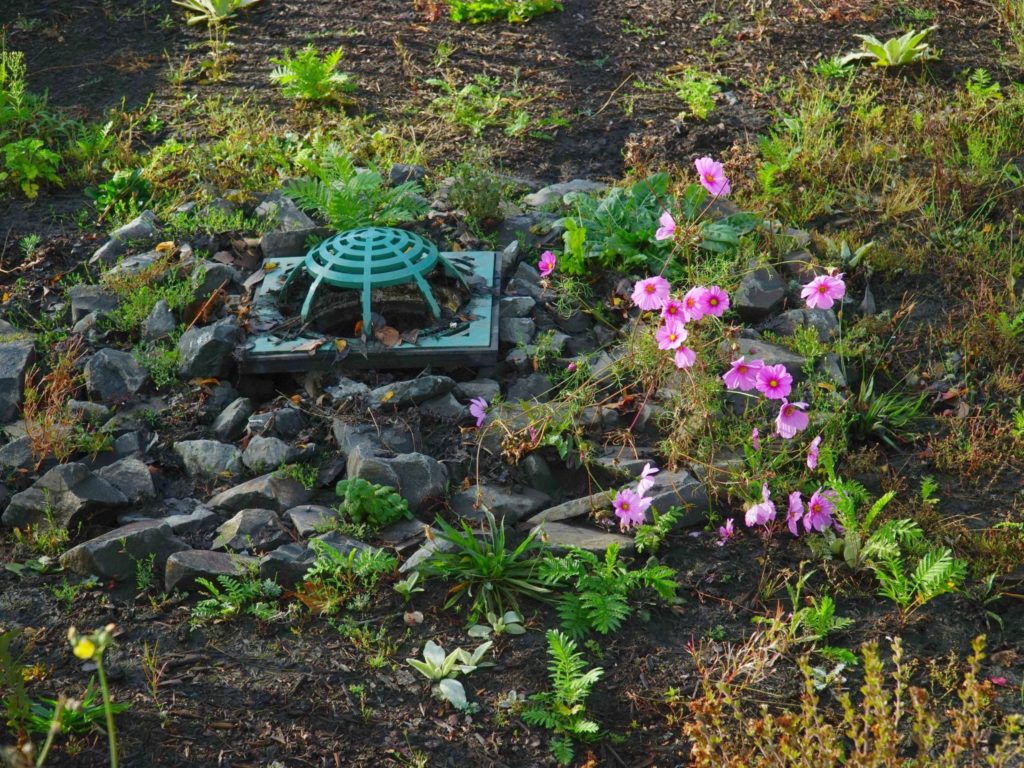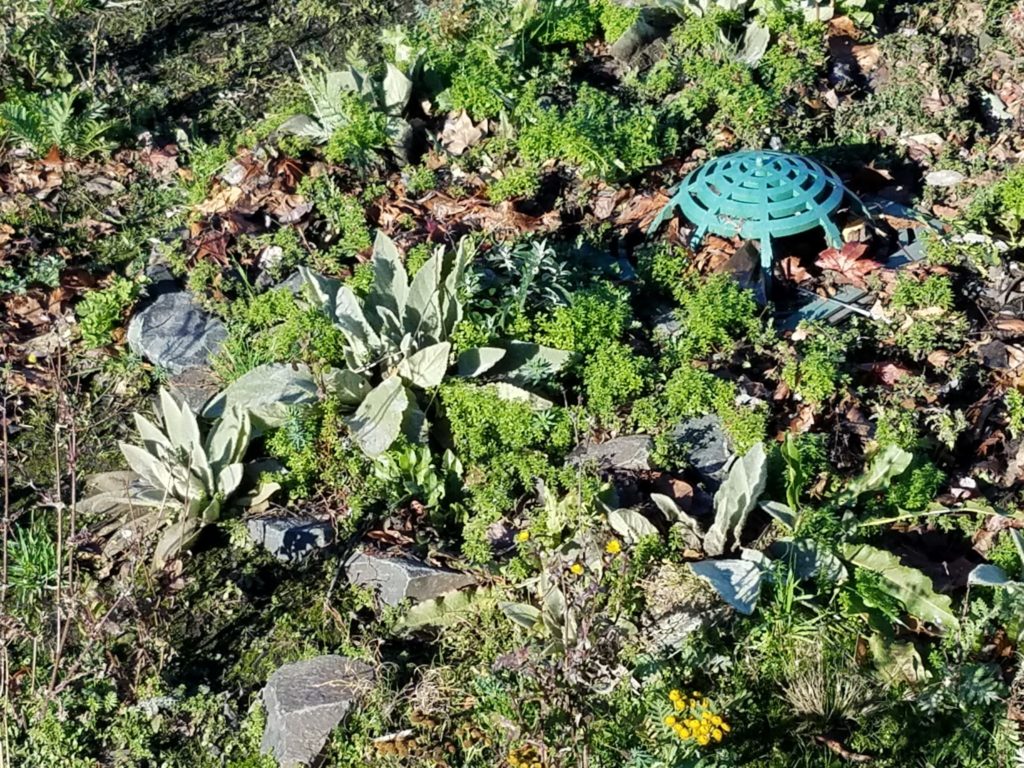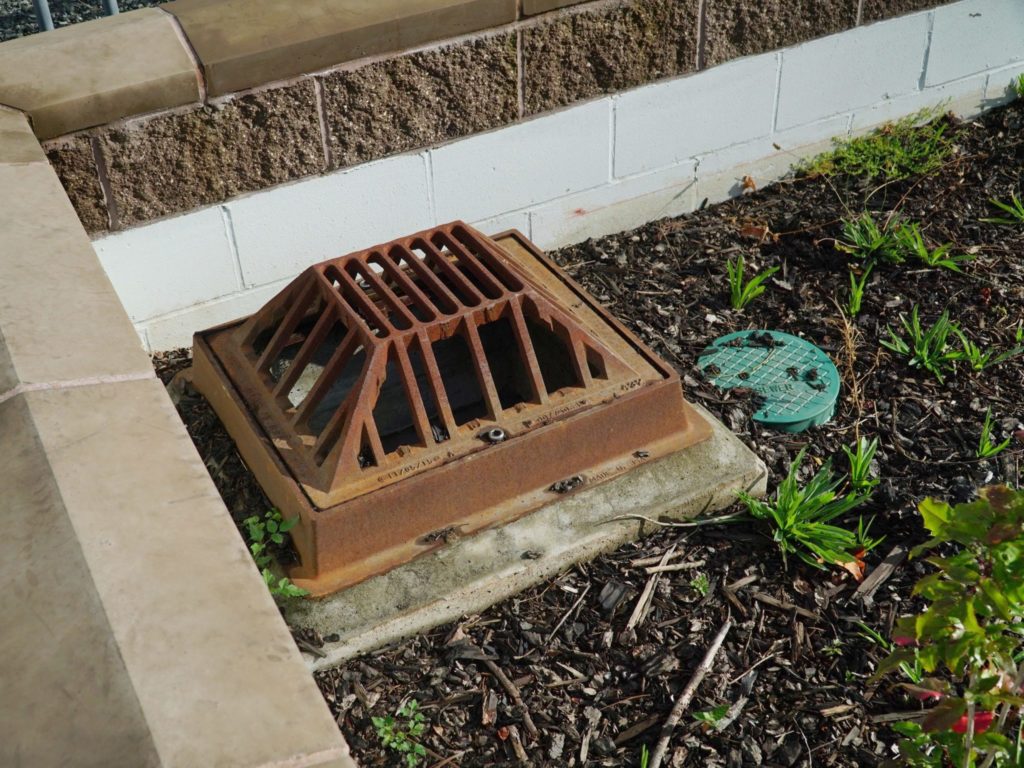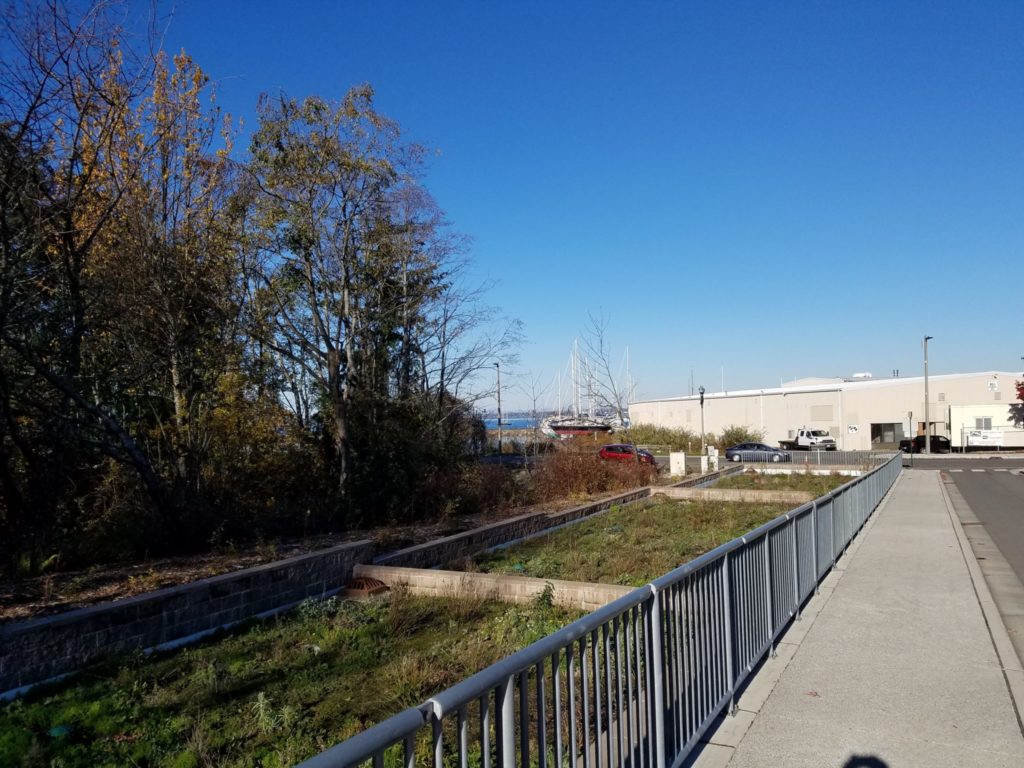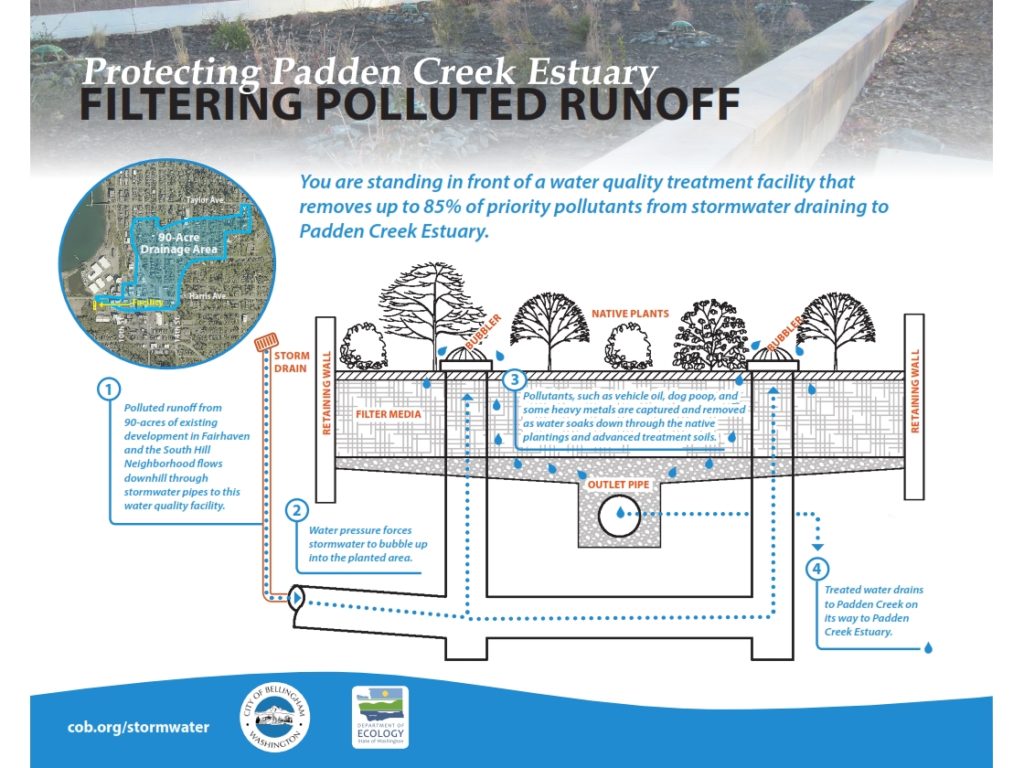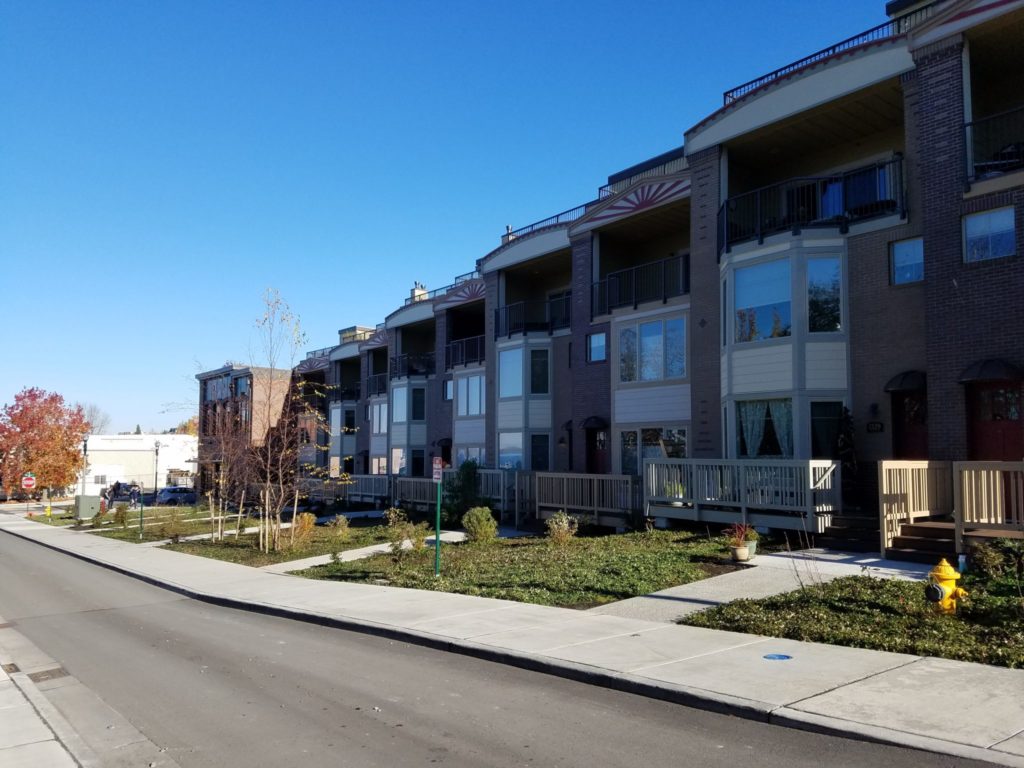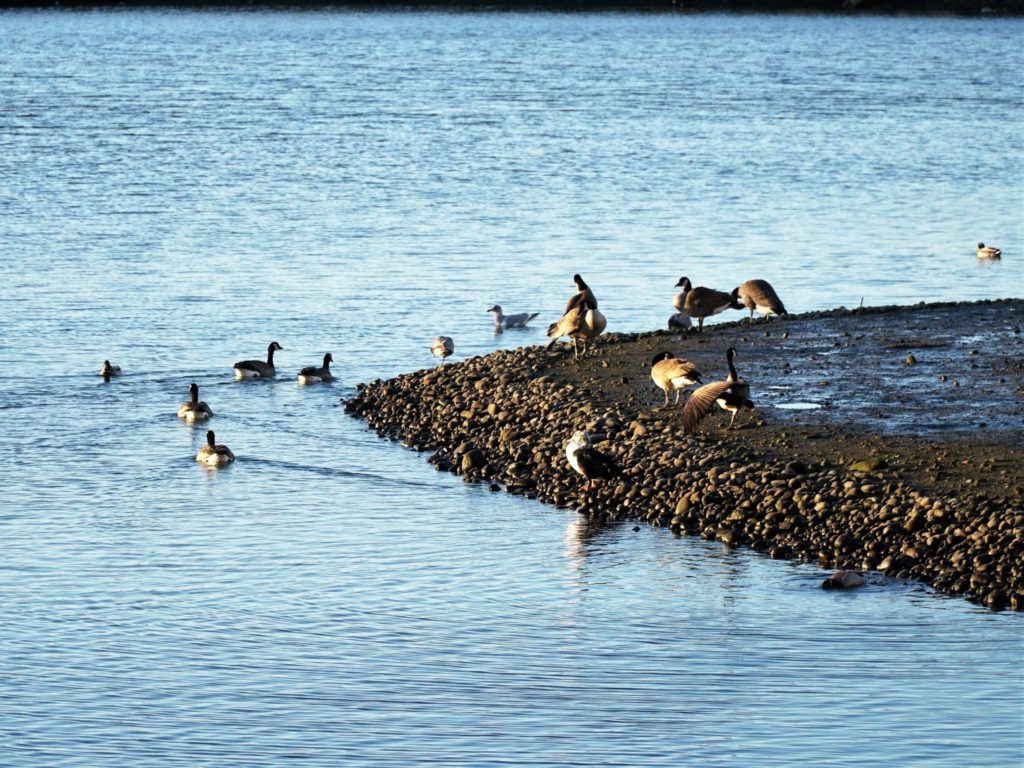Where is this located? It’s at the corner of 8th Street where the hill on Harris Avenue levels out near the Padden Estuary.
What’s special about this place? This is one of the most sophisticated stormwater facilities in Bellingham called a bioretention facility. Part of 8th Street was used to make room for this facility which is responsible for final treatment for most of Fairhaven’s stormwater. For its size, it cleans an enormous amount of water. This system has three chambers or basins filled with layers and layers of special material and topped with hardy native plants and perennials. The runoff carried under the roads in Fairhaven to the bioscape eventually ends up here. It enters the bottom of the chambers through pipes. Stormwater normally flows downhill, but here, the pressure of the water pushes it upwards through pipes and out through the green-domed bubblers you see on top. On the surface, you’ll see leaves and other things that were carried away in the stormwater runoff. The stormwater spreads out and then flows back down through a special formula of soil and other materials. The roots of the plants on top loosen the mulch and soil so the water can seep in. This process removes the remaining pollutants and any sediment from the stormwater. Below the surface, pipes then collect the cleaned water and channel it directly into Padden Creek. During a storm, some water may flow so quickly as to not have a chance to soak in. When that happens, the overflow goes down the drain through pipes and empties into Padden Creek. Even under these conditions, the water has by this time had some treatment before entering the bay.
The raised maintenance access path along 8th Street next to the facility is made of pervious concrete. When it’s raining, you can watch the water soak right into the concrete and into the materials below where it’s filtered of any pollutants.
image gallery
select any photo to see a slideshow
